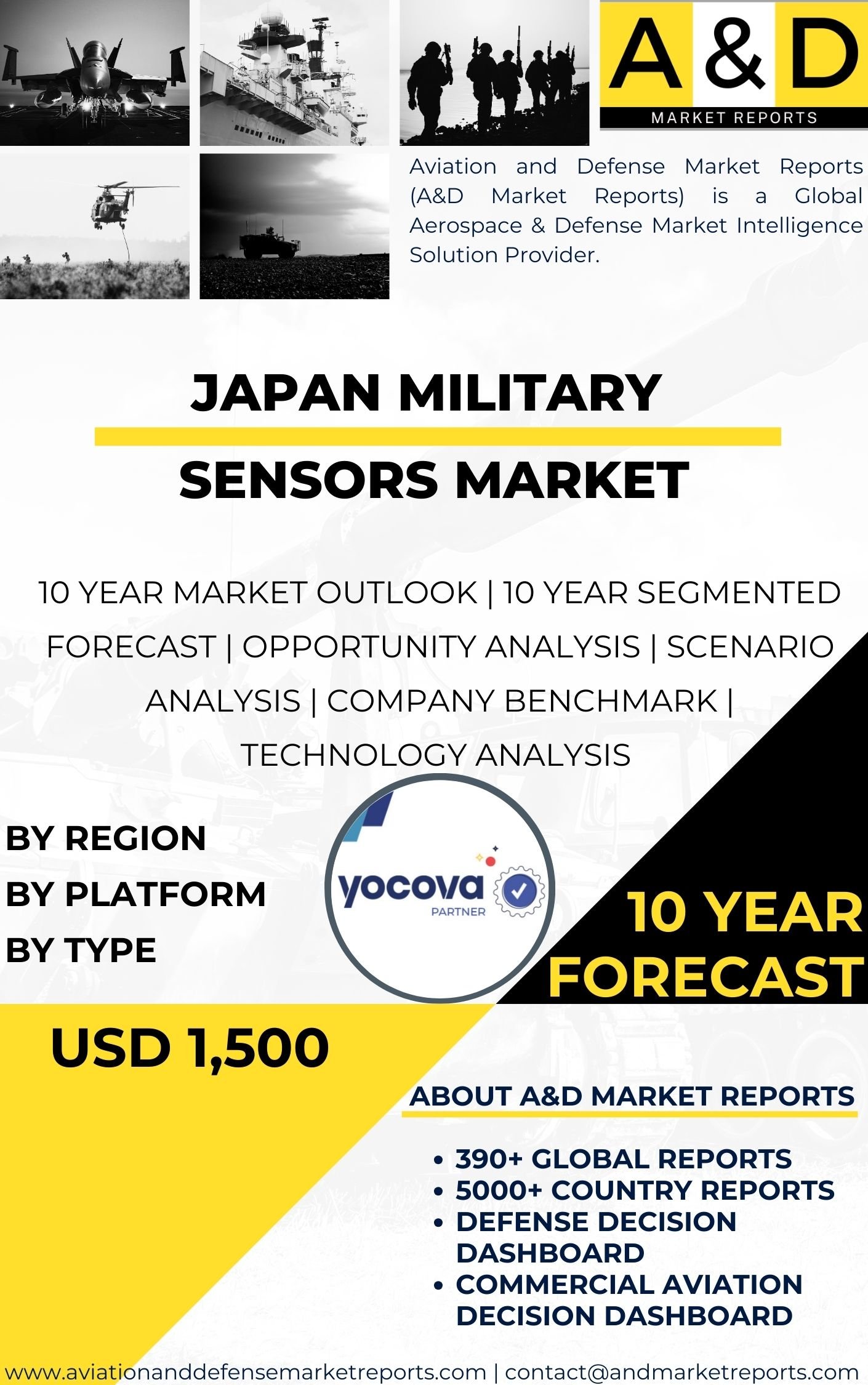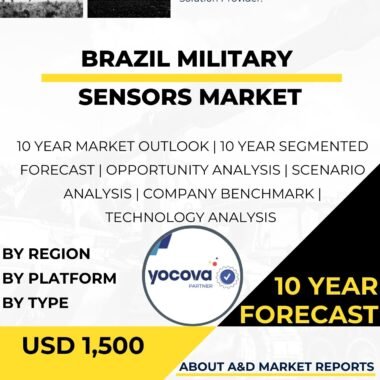Description
The military sensors market in Japan has witnessed significant growth and strategic importance in recent years as the nation focuses on enhancing its defense capabilities and modernizing its armed forces. Military sensors are critical components that provide essential data and information to military commanders and operators, enabling them to make informed decisions, enhance situational awareness, and effectively respond to threats and challenges. As Japan faces evolving security threats and regional tensions, the demand for advanced military sensors has grown, leading to increased research, development, and investment in this field.
Military sensors in Japan encompass a wide range of technologies, including radar, sonar, electro-optical/infrared (EO/IR), signals intelligence (SIGINT), chemical/biological/radiological/nuclear (CBRN) detection, and electronic warfare (EW) systems. These sensors are used across different military platforms, including ships, aircraft, ground vehicles, and unmanned systems, to provide comprehensive surveillance, reconnaissance, and target acquisition capabilities.
One of the primary applications of military sensors in Japan is in maritime surveillance and reconnaissance. Japan’s geographical location as an archipelago necessitates a strong focus on maritime security. Maritime sensors, such as radar and sonar systems, play a crucial role in detecting and tracking surface vessels and submarines, providing the Japan Maritime Self-Defense Force (JMSDF) with critical situational awareness and the ability to safeguard Japan’s territorial waters and exclusive economic zones (EEZ).
Moreover, military sensors are also utilized in air surveillance and early warning systems. Advanced radar and EO/IR sensors enable the Japan Air Self-Defense Force (JASDF) to monitor airspace, detect incoming threats, and provide timely warnings, contributing to the nation’s air defense posture.
Additionally, military sensors are essential in intelligence, surveillance, and reconnaissance (ISR) missions. EO/IR sensors, for instance, offer high-resolution imagery and night vision capabilities, allowing military forces to gather valuable intelligence on enemy positions and activities.
In the realm of electronic warfare, sensors such as radar warning receivers (RWR) and electronic support measures (ESM) play a critical role in detecting and analyzing enemy electronic emissions, helping to identify potential threats and counter adversary EW operations effectively.
As Japan emphasizes indigenous defense capabilities, the domestic production and development of military sensors have seen substantial growth. Collaborations between the government, defense industry, and research institutions have fostered innovation, leading to the creation of advanced sensor systems tailored to Japan’s specific defense requirements.
Japan’s alliance with the United States has also played a significant role in the development of its military sensor capabilities. Through this partnership, Japan has access to advanced sensor technologies and expertise, contributing to the modernization of its defense forces and enhancing interoperability with allied nations.
The military sensors market in Japan also benefits from advancements in materials science, signal processing, and data fusion algorithms. Manufacturers have leveraged these developments to create sensors with improved range, sensitivity, and accuracy, enhancing their performance and mission capabilities.
However, the military sensors market in Japan also faces challenges related to cost, integration, and data management. Developing and maintaining advanced sensor systems can be costly, requiring significant investment in research, development, production, and testing.
Moreover, integrating different sensor systems into a unified network can be complex, requiring robust data fusion and communication capabilities to ensure seamless information sharing and analysis.
Addressing data management is also crucial, as the vast amount of data generated by military sensors requires efficient processing, storage, and analysis to extract actionable intelligence and maintain situational awareness.
In conclusion, the military sensors market in Japan has witnessed significant growth and strategic importance, driven by the nation’s focus on enhancing its defense capabilities and modernizing its armed forces. Military sensors provide critical capabilities for surveillance, reconnaissance, intelligence gathering, and electronic warfare, making them integral to Japan’s defense forces. The collaboration between the government, defense industry, and research institutions, as well as international partnerships with allied nations, fosters innovation and contributes to the growth of the domestic military sensors market. Addressing challenges related to cost, integration, and data management is crucial for further enhancing Japan’s military sensor capabilities and ensuring reliable and comprehensive surveillance and reconnaissance capabilities for effective defense operations. With its strategic focus on enhancing indigenous defense capabilities, Japan remains committed to leveraging advanced military sensor technologies to enhance its defense capabilities and contribute to regional and global security.




